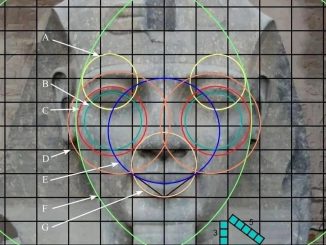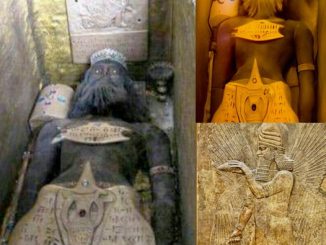In the annals of history, there are artifacts that not only stand as testaments to the craftsmanship of their time but also serve as windows into the cultures and civilizations that created them. One such treasure is the Gold Torque adorned with Scythian Riders, dating back to the 4th century BC, discovered in the Hellenic Bosporan settlement of Pantikapaion, situated in ancient Chersonesos (modern-day Crimea). Join me on a journey as we delve into the rich tapestry of history woven around this magnificent relic.

The Glorious Past of Pantikapaion
Pantikapaion, nestled on the eastern shore of Crimea, was an ancient Hellenic city known for its strategic location and rich cultural heritage. Founded by Milesians in the late 7th or early 6th century BC, the city rose to prominence as the residence of the Helleno-Thracian kings of Bosporus during the 5th and 4th centuries BC. Its position on the western side of the Cimmerian Bosporus granted it access to lucrative trade routes and made it a hub of economic and cultural exchange.
However, the golden age of Pantikapaion was not to last. Economic decline gripped the city in the 4th and 3rd centuries BC, brought about by factors such as the Sarmatian conquest of the steppes and the increasing competition of Egyptian grain. Despite these challenges, Pantikapaion retained its allure, leaving behind a legacy that continues to captivate archaeologists and historians to this day.
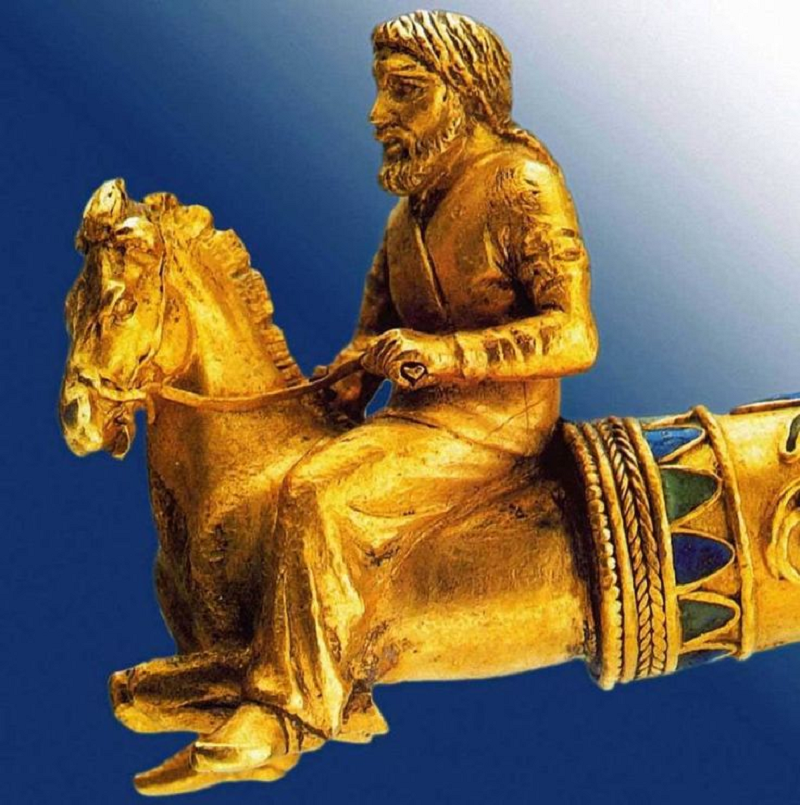
The Magnificent Discovery
In the midst of Pantikapaion’s ruins, archaeologists unearthed a treasure that surpassed all expectations: the Gold Torque adorned with Scythian Riders. Dating back to the 4th century BC, this exquisite piece of jewelry exemplifies the fusion of artistic styles and cultural influences prevalent in the Bosporan region during that era.
Crafted from gleaming gold, the torque features intricate detailing that pays homage to the Scythian nomads who roamed the steppes of Eurasia. At its center, a group of Scythian riders is depicted in dynamic motion, their horses galloping across the landscape with an air of freedom and vitality. Each figure is meticulously rendered, their features conveying a sense of strength and nobility befitting their warrior heritage.
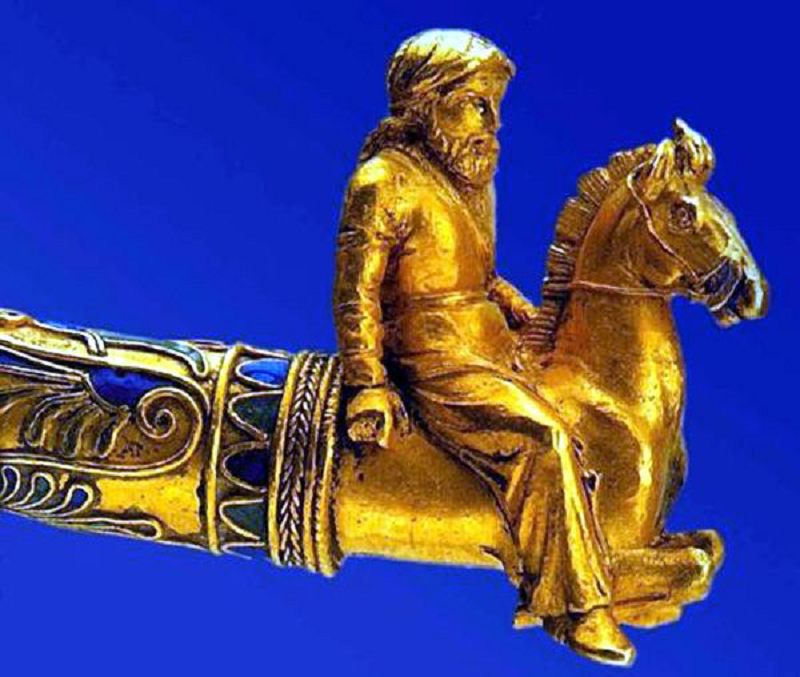
Unlocking the Secrets
Beyond its aesthetic beauty, the Gold Torque of Pantikapaion holds a wealth of historical and cultural significance. The presence of Scythian imagery suggests a symbiotic relationship between the Hellenic settlers of Pantikapaion and the indigenous nomadic tribes of the region. This blending of cultures is further evidenced by the use of the torque—a traditional Scythian adornment—within a Hellenic context.
Moreover, the craftsmanship displayed in the torque speaks to the advanced metallurgical techniques employed by the artisans of ancient Pantikapaion. The mastery with which the gold is worked reflects a sophisticated understanding of material properties and artistic expression, underscoring the city’s status as a center of innovation and creativity.
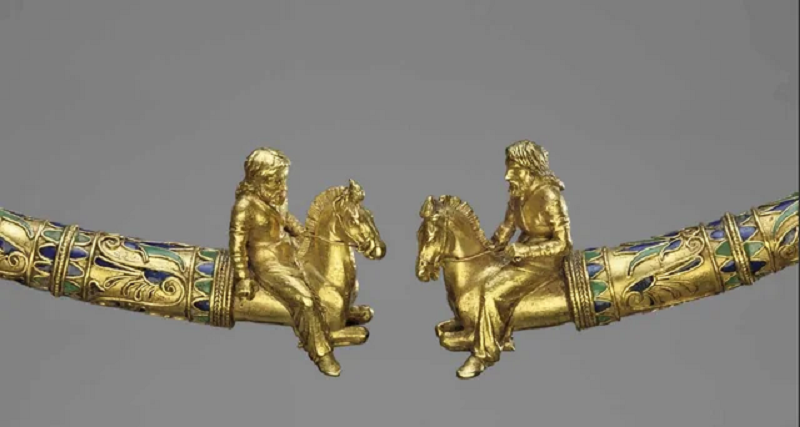
A Glimpse into the Past
As we reflect on the significance of the Gold Torque adorned with Scythian Riders, we are reminded of the enduring power of artifacts to transcend time and connect us to the lives and legacies of those who came before. In Pantikapaion, we find a microcosm of the ancient world—a melting pot of cultures, ideas, and aspirations that continue to shape our understanding of history.
The discovery of this magnificent relic serves as a testament to the resilience and ingenuity of the people who once called Pantikapaion home. It invites us to ponder the mysteries of the past and to marvel at the enduring beauty of human creativity. In the end, the Gold Torque of Pantikapaion stands as a beacon of inspiration, beckoning us to explore the depths of our shared heritage and to embrace the richness of our collective history.
